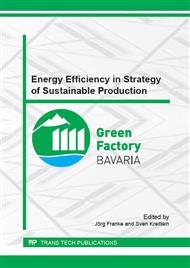p.105
p.115
p.123
p.131
p.139
p.147
p.154
p.162
p.171
Functional Printing of Silver Nano Ink on Injection Molded Polymeric Substrates
Abstract:
Over the last decades ink-jet printing has developed in many applications. The direct writing of materials such as silver (for conductive circuits) or polymers (for insulation or second layer) is an attractive method to reduce costs and save raw materials. In this article we investigate the geometrical and electrical properties of conductive circuit lines on thermoplastic substrates, depending on the printing parameters such as line width, orientation of the lines and density of the printed drops (dots per inch = dpi)First the surface of the substrates is scanned by a confocal laser scanner. The substrates (size 60mm x60 mm) are subdivided in 80 x 80 parts with a side length of 0.8mm. The 2D roughness (Sa) of these little parts is calculated and as a result the locally solved roughness of the substrates is determined. Homogeneity and surface quality of the surfaces can be evaluated.On the different polymeric substrates conductors (length 25mm) are printed with a printing head with 16 nozzles and with different orientations (parallel, horizontal and in an angle of 45° to the movement of the printing head). Also different dpi numbers (600, 900 and 1200) are used and the line width in the bit pattern is increased from 1 pixel to 5 pixels. The line width in μm depending on the line width in pixel is measured. The quality of the printed lines is quantified by calculating the deviation of the printed lines to a “perfect straight line” with the same width. The resistivity of the conducting lines and the reliability of the process are determined.
Info:
Periodical:
Pages:
139-146
Citation:
Online since:
November 2015
Authors:
Keywords:
Price:
Сopyright:
© 2015 Trans Tech Publications Ltd. All Rights Reserved
Share:
Citation:


